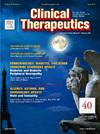The Effect of Intermittent Fasting Diet in Comparison With Low-Calorie Diet on Inflammation, Lipid Profile, Glycemic Index, Liver Fibrosis in Patients With Metabolic-Associated Fatty Liver Disease (MAFLD): A Randomized Controlled Trial
IF 3.2
4区 医学
Q2 PHARMACOLOGY & PHARMACY
引用次数: 0
Abstract
Background
Metabolic-associated fatty liver disease (MAFLD) is a prevalent condition with significant health and economic burdens. Dietary interventions, such as intermittent fasting (IF) and low-calorie diets (LCD), have shown promise in managing MAFLD, but their comparative efficacy remains unclear.
Methods
This 10-month, parallel, single-blind randomized controlled trial compared the effects of a 16:8 IF diet with an LCD on 52 patients with MAFLD. Anthropometric, biochemical, liver enzyme, steatosis, fibrosis, inflammatory, and oxidative status parameters were assessed before and after the interventions.
Results
Both diets led to improvements in anthropometric measures and liver enzyme levels, with no significant differences between groups. However, the LCD group showed superior outcomes in reducing liver steatosis (–52.40 vs –44.63 dB/m; P < 0.001) and fibrosis (–0.74 vs –0.004 Kpa; P = 0.01) compared to the IF group. LCD also led to a significant decrease in serum triglycerides (–24.08 vs 11.22 mg/dL; P = 0.02), while neither intervention significantly affected inflammatory markers or oxidative status.
Conclusion
While both IF and LCD can be effective in managing MAFLD, LCD may offer additional benefits in terms of liver fat reduction and improvement in certain lipid parameters. These findings highlight the complexity of dietary interventions in MAFLD and the need for personalized approaches.
求助全文
约1分钟内获得全文
求助全文
来源期刊

Clinical therapeutics
医学-药学
CiteScore
6.00
自引率
3.10%
发文量
154
审稿时长
9 weeks
期刊介绍:
Clinical Therapeutics provides peer-reviewed, rapid publication of recent developments in drug and other therapies as well as in diagnostics, pharmacoeconomics, health policy, treatment outcomes, and innovations in drug and biologics research. In addition Clinical Therapeutics features updates on specific topics collated by expert Topic Editors. Clinical Therapeutics is read by a large international audience of scientists and clinicians in a variety of research, academic, and clinical practice settings. Articles are indexed by all major biomedical abstracting databases.
 求助内容:
求助内容: 应助结果提醒方式:
应助结果提醒方式:


